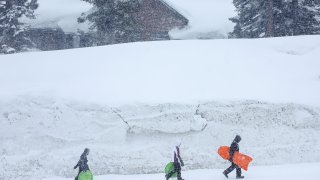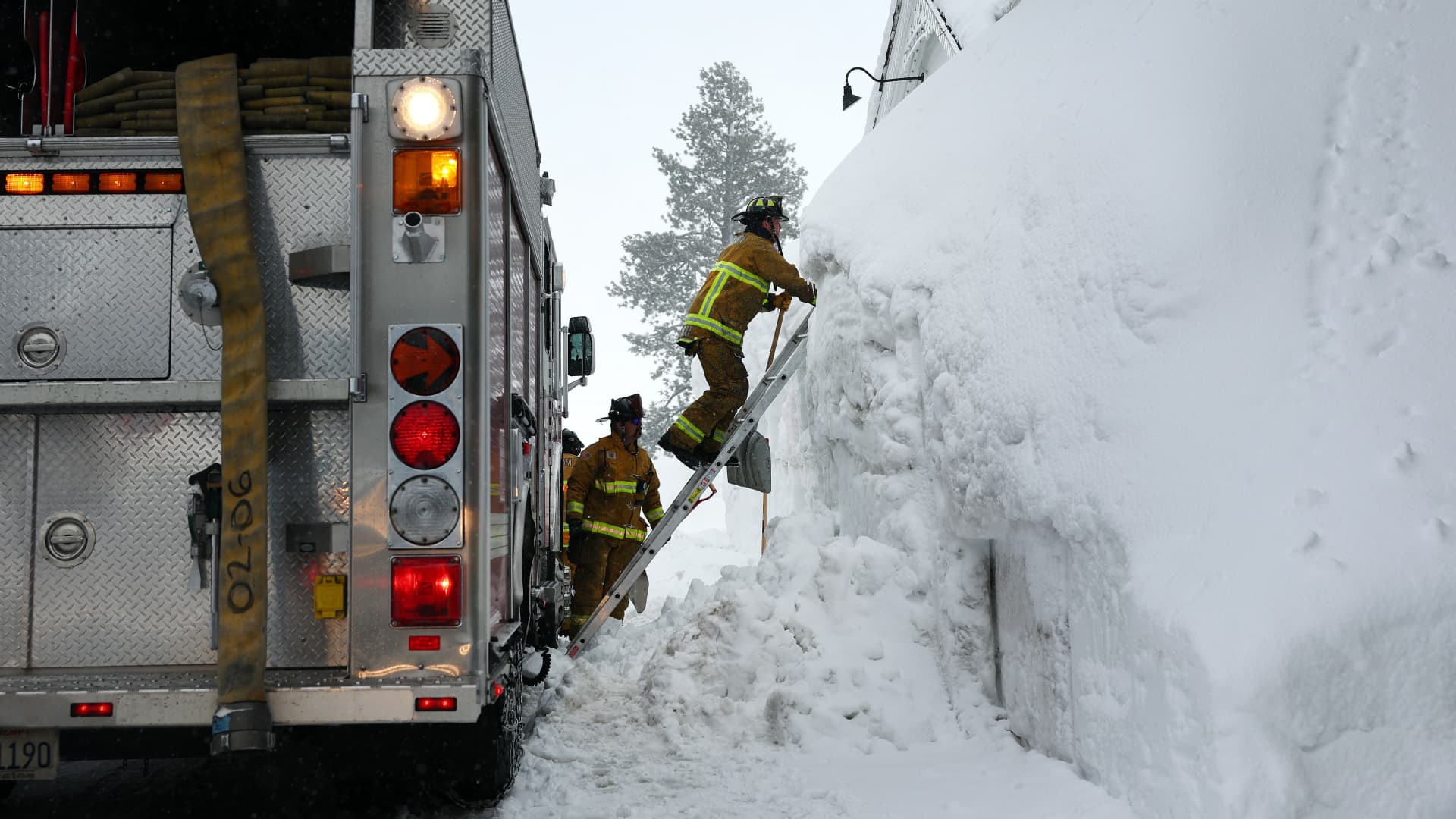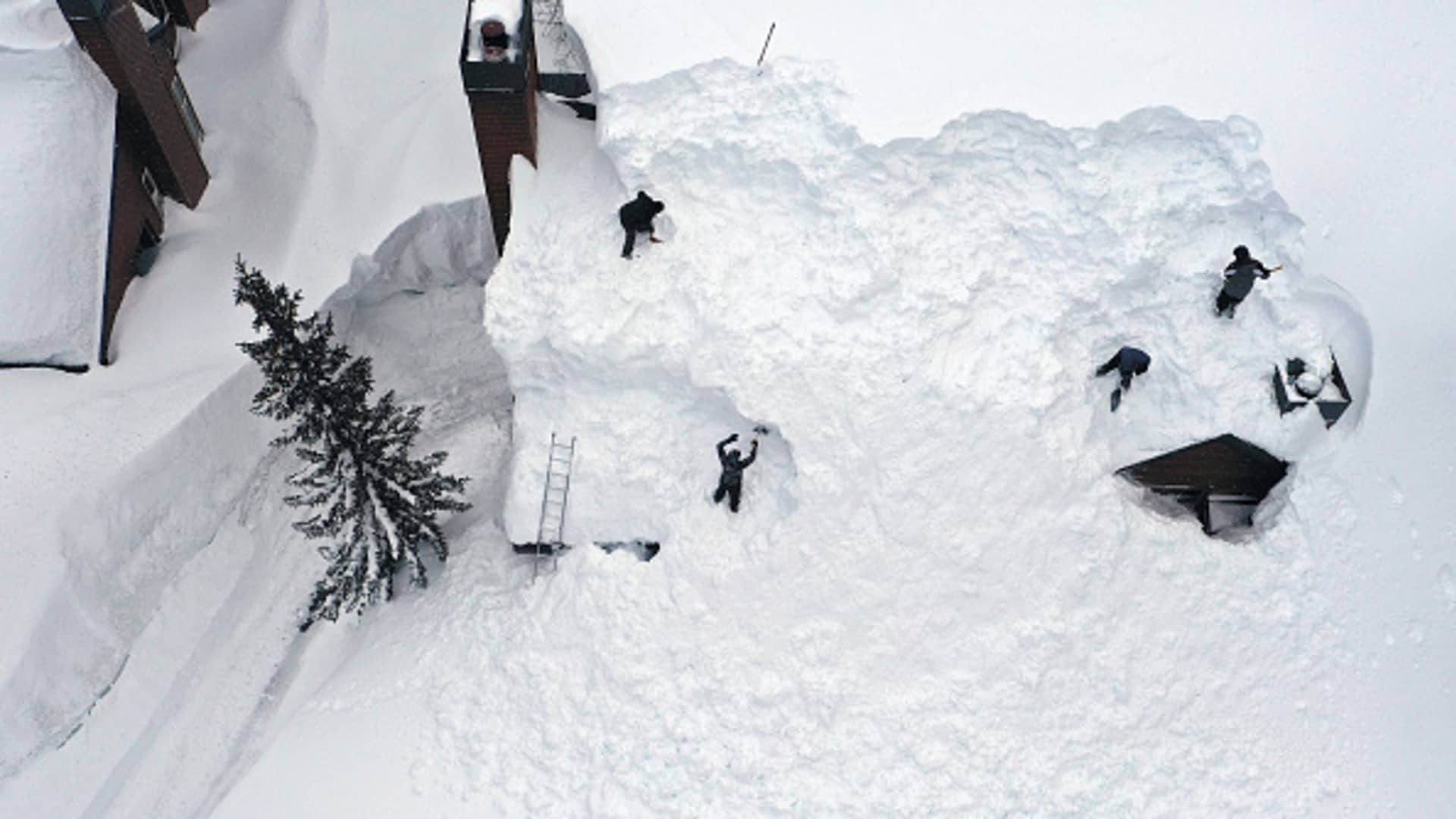
- California's statewide snowpack could top records after a recent series of powerful storms, state water officials said Monday.
- This year's major snowpack provides some relief to California, which was three years into a prolonged drought and grappling with plummeting reservoir levels.
- Statewide snowpack is at 237% of the April average, ranking among the highest in state history, according to the fourth snow survey of the season by the Department of Water Resources.
California's statewide snowpack could top records after a recent series of powerful storms, state water officials said Monday, and melting snow from the Sierra Nevada range poses a severe flood risk to some areas.
This year's major snowfall provides some relief to California, which was three years into a prolonged drought and grappling with plummeting reservoir levels. Statewide snowpack is at 237% of the April average, ranking among the highest in state history, according to the fourth snow survey of the season by the Department of Water Resources.
Officials, who took readings from 130 snow sensors placed across the state, said the results were higher than any other reading since the sensor network was established in the mid-1980s. Before the network was established, the April summary for snow course measurements in 1952 was also 237% of average, although there were fewer snow courses at that time, making it difficult to compare to results this month.
"This year's result will go down as one of the largest snowpack years on record in California," said Sean de Guzman, manager of DWR's Snow Surveys and Water Supply Forecasting Unit.
"Because additional snow courses were added over the years, it is difficult to compare results accurately across the decades with precision, but this year's snowpack is definitely one of the biggest the state has seen since the 1950s," Guzman said.
California's snowpack levels varied by region, with the Southern Sierra snowpack reaching 300% of its April 1 average and the Central Sierra reaching 237% of its April 1 average, officials said. And the critical Northern Sierra, home to the state's largest surface water reservoirs, is at 192% of its April 1 average.

A series of storms this winter included a dozen atmospheric rivers, and caused widespread flooding, mudslides and other damage while also dropping feet of snow in the mountains and boosting reservoir levels.
Money Report
Get a weekly recap of the latest San Francisco Bay Area housing news. Sign up for NBC Bay Area’s Housing Deconstructed newsletter.
Following the latest series of storms, DWR officials announced last month that the agency expects to deliver 75% of requested water supplies in the state, up from 35% forecast in February. Officials also warned the new allocation could be adjusted back down if extreme dry conditions warrant.
Governor Gavin Newsom in March also rolled back some of the state's most severe drought restrictions, including his July 2021 call for a voluntary 15% reduction in water use and his March 2022 order requiring urban water suppliers to increase conservation actions.

The size and distribution of the state's snowpack is posing severe flood risk to areas of California, especially the San Joaquin Valley, which is located in the southern part of the state's vast Central Valley and is drained largely by the San Joaquin River. A long-dormant lake in that region, Tulare Lake, is reappearing after being drained almost 100 years ago for agricultural land.
"This year's severe storms and flooding is the latest example that California's climate is becoming more extreme," DWR Director Karla Nemeth said in a statement.
While winter storms have helped the snowpack and reservoirs, officials have warned that groundwater basins are slower to recover, and many rural communities are still grappling with a lack of groundwater supplies.
Officials also warned that long-term drought conditions in the Colorado River Basin will also continue to impact the water supply for millions of Californians and urged residents to conserve water as more swings between wet and dry conditions are expected in the future.







